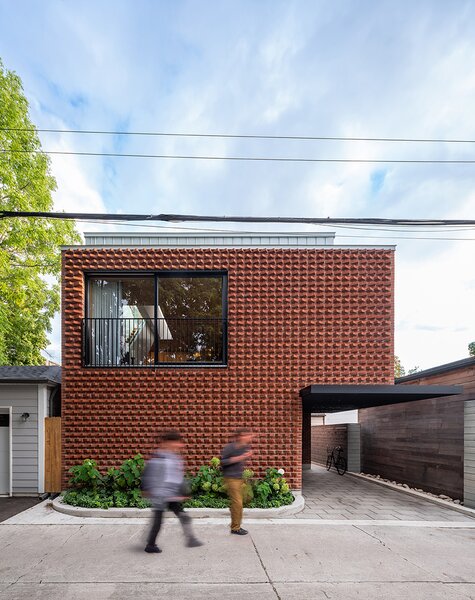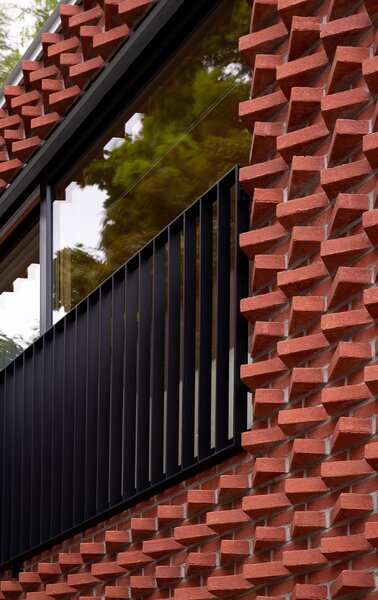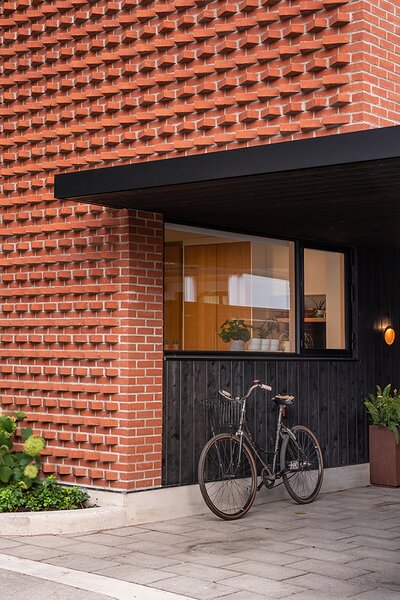The family of five’s laneway house has a mesmerizing facade that distinguishes it from neighbors and minimizes solar gain.
Houses We Love: Every day we feature a remarkable space submitted by our community of architects, designers, builders, and homeowners. Have one to share? Post it here.
Project Details:
Location: Toronto, Canada
Architect: Williamson Williamson / @wwincto
Footprint: 2,300 square feet
Builder: Wilkin Construction Services
Structural Engineer: Atkins + Van Groll
Structural Engineer: Faet Lab
Landscape Design: Woodhill Garden Centre
Interior Design: Suzanne Wilkinson Interiors
Brick Installer: Magnum Masonry
Brick Supplier: Belden
Cabinetry: Scavolini and Ell-RoHd Holdings
HVAC: McCallum HVAC Design
Concrete Floor: Elemental Flooring
Photographer: Scott Norsworthy / @norsworthscott
From the Architect: "The Garden Laneway House is a 2,300-square-foot, four-bedroom home. Whereas most of the laneway suites built in Toronto under a 2018 by-law are small rental units or bonus rooms that add amenity—and area—to the main house, this laneway suite was designed to be a primary residence. The kitchen, dining, and living space are on the top level, which has the largest floor plate and the best light. Bedrooms for three teen boys are nested on the ground floor and a large basement space contains a primary bedroom lit with a large light well. During construction, the main house was converted into a legal two-unit principal rental, allowing for three families on a single-family lot.
"The family uses the laneway as their front door. The entrance is recessed deep under the carport canopy ensuring privacy from cars that access the garages surrounding the home. The facades facing the street and the laneway, south and north respectively, are primarily solid. The by-law glazing limitations reinforce the desire for privacy from the laneway and the rear windows of the principal rental. Animating the brick facade breaks up this solidity with pattern and shadow. Courses of twisted and nested brick alternate with flat courses. As the bricks are rotated out of plane, they create a triangular shadow pattern on the flat course below. This is not a utilitarian building on a laneway, but one that has presence and enlivens the laneway as a traditional home does a street.
"Inside, windows and skylights illuminate rich and natural materials. Polished concrete floors and oak cabinetry set the primary palette. A light grey trapezoidal balustrade connects the roof to the basement level with an open tread stair, allowing the roof-top skylight to filter light down through the house.
"Brick was selected to give the laneway house the robust presence that houses on the main street have. The house was designed to feel like a primary home, not like the wood and shingle clad garages that are typical of the laneways.
"The aesthetic goals were to bring beauty to the laneway and to create facades that would be animated with light. Brick was important to this because it is a solid modular material. It can be used to create a pattern that will create shadows while providing excellent building envelope performance for the long term. The pattern breaks up the solid facade and as the sun moves around the house, the shadows change shape."

Photo by Scott Norsworthy

Photo by Scott Norsworthy

Photo by Scott Norsworthy
See the full story on Dwell.com: To Make Their Home Stand Out, They Covered It in Rows of Protruding Bricks
Read More
By: Grace Bernard
Title: To Make Their Home Stand Out, They Covered It in Rows of Protruding Bricks
Sourced From: www.dwell.com/article/garden-laneway-house-williamson-williamson-toronto-laneway-house-2b5c62ca
Published Date: Tue, 26 Mar 2024 15:49:39 GMT
.png)





